

The tour begins with a short orientation near a vintage wooden press,
including a demonstration of how type was cast in Gutenberg's day.


Here, we see Peter pouring hot type metal into a hand mold, containing a brass matrix for a letter. The metal freezes almost instantly. Note that he's wearing a heavy heat-resistant glove on the hand holding the mold; even with wood all around for insulation, it's still plenty hot, given that type metal melts at a temperature (depending on the exact alloy) of somewhere between 475 and 620 degrees Fahrenheit (246-327 degrees Celsius).
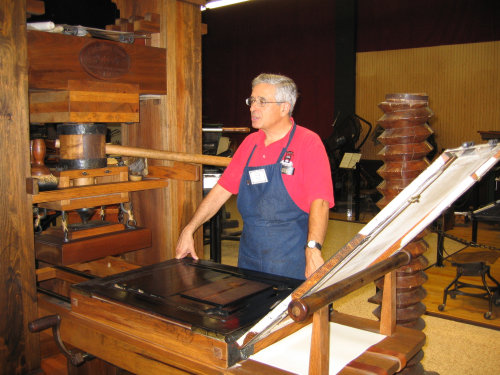
Next, we see a reproduction of Gutenberg's press, where you might
have a chance to pull the "devil's tail" and print a page (usually a reproduction of a page from a Gutenberg Bible)
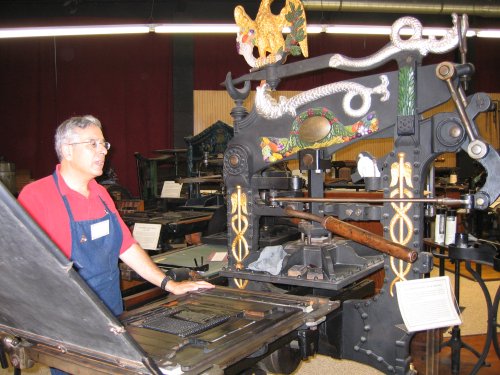 The Columbian Press, one of the first cast iron presses, used the cast iron eagle as a counterwight. While it was designed for the American market, it wsa actually more popular in England, because a wooden press is much cheaper to transport long distances.
The Columbian Press, one of the first cast iron presses, used the cast iron eagle as a counterwight. While it was designed for the American market, it wsa actually more popular in England, because a wooden press is much cheaper to transport long distances.
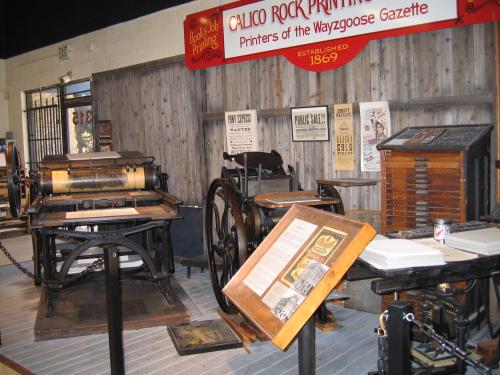
Then, we see how printing developed in the 19th century, including
how the Los Angeles Times got its start, . . .
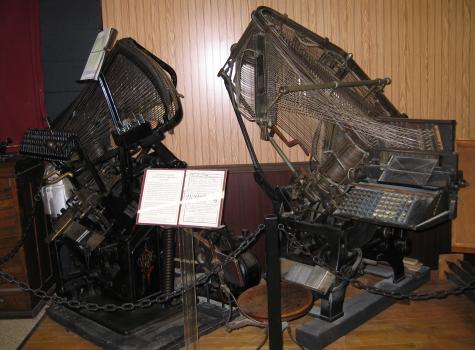 . . . and the beginnings of
machine-set type, including the Rogers Typograph (an early attempt at something simpler than Mergenthaler's Linotype), which evolved into the
Linotype Jr. (both below), as well as that "Eighth Wonder of the World," Ottmar Mergenthaler's masterpiece, and a machine
that Rube Goldberg himself could have designed (and yet which works, and
works very reliably), the Linotype itself.
. . . and the beginnings of
machine-set type, including the Rogers Typograph (an early attempt at something simpler than Mergenthaler's Linotype), which evolved into the
Linotype Jr. (both below), as well as that "Eighth Wonder of the World," Ottmar Mergenthaler's masterpiece, and a machine
that Rube Goldberg himself could have designed (and yet which works, and
works very reliably), the Linotype itself.
At the end of the tour, we cross the parking lot to our back building, which houses our Book Arts Institute and our warehouse, and where a docent or staff member will demonstrate the Linotype in action, casting your name on a Linotype slug, which we then use to print a souvenir card on a vintage Vandercook high-speed proof press; you get to keep both the slug and the souvenir card. (We always try to give value for your ten bucks.)
 The late Luis Garcia had over five decades of experience as a Linotype operator, both in the United States and in Mexico, and almost to the day he died, he could not only operate, but troubleshoot, repair, and if necessary rebuild the machine.
The late Luis Garcia had over five decades of experience as a Linotype operator, both in the United States and in Mexico, and almost to the day he died, he could not only operate, but troubleshoot, repair, and if necessary rebuild the machine.
Once your name is set, and before the slug is actually cast, you can get a look at the matrices in the stick, to make sure your name is spelled right.

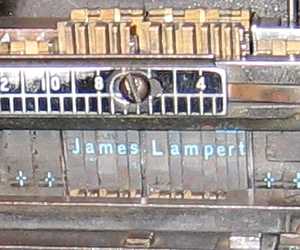
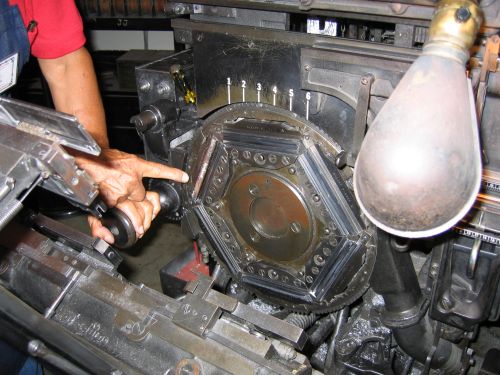 Here is a look at the molds on a Linotype. This model of Linotype has six different slug molds, each of a different size.
Here is a look at the molds on a Linotype. This model of Linotype has six different slug molds, each of a different size.
Below: The back of the Linotype is a maze of cams and levers
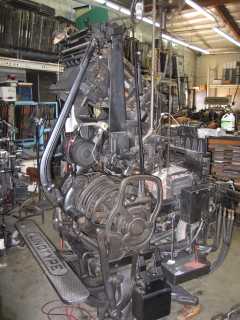
Once the slug has been cast, it is delivered out a chute at the front of the machine, to the operator's left. Then, your tour guide, or perhaps a docent, will print your souvenir card on the high-speed proof press.
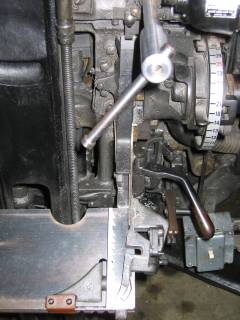
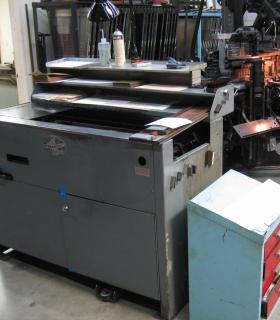
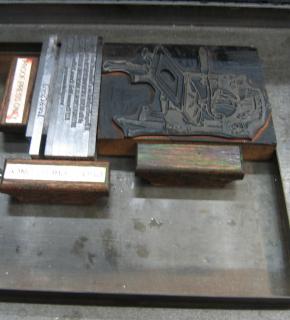
Depending on scheduling, there may be classes going on in one or more of the labs, anything from learning to print on a vintage press, to learning some fine art printing or papermaking technique. And of course, if you have any special interests, a docent may be available to show you around some of the items in the labs and warehouse.
![]()
Back to the main typesetting page
![]()
Back Home
James H. H. Lampert
Copyright © James H. H. Lampert, 2011-2016
Revised Friday, January 22, 2016
This Page URL: http://members.toast.net/JHHL/Typesetting/Tour.html
Home Page URL: http:/members.toast.net/JHHL/index.html